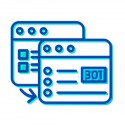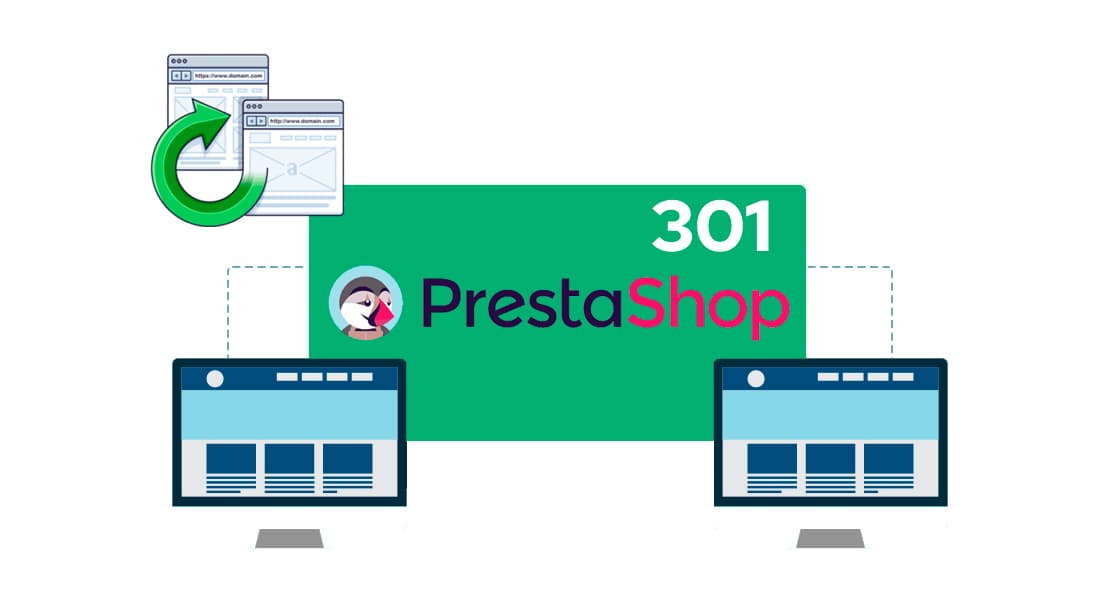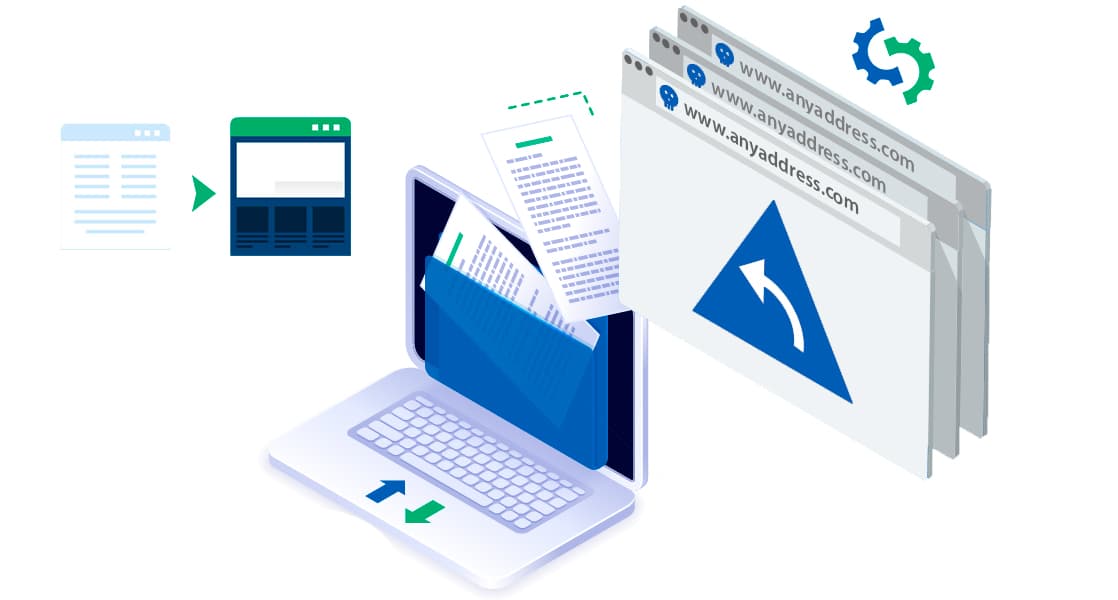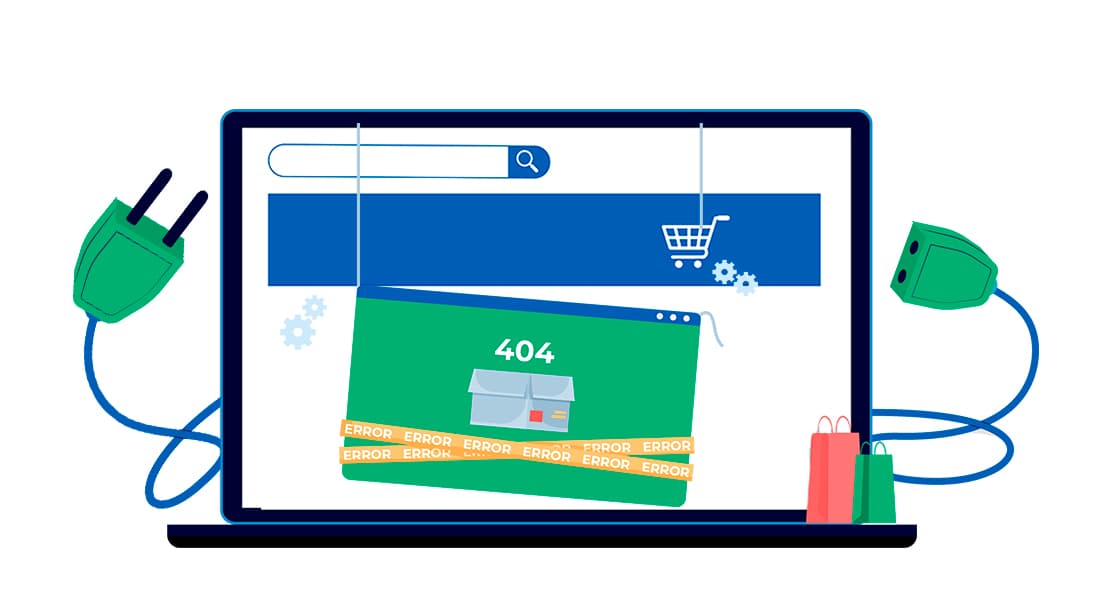







Reference: LIV-ECOM-SERV-MARK-REDIR
301 redirections in Prestashop for domain switching or improve SEO by restructuring the website. Solution to the indexing of pages with errors and broken 404 links, which affect search engine positioning. Up to 100 URL redirections per shop.
There are several cases in which it will be necessary to make URL redirections in an online shop. Search engine optimization work goes hand in hand with providing a better user experience, applying techniques that allow these improvements to be achieved.
Thus, to change the domain of a Prestashop that is already positioning in search engines or to solve 404 errors of indexed pages, eliminate duplicate content and work on improving SEO positioning, through changes in the structure of the site, It will be necessary to make a series of redirections, which will go from certain indexed or source urls, to other destination urls, in order to avoid usability problems or enhance the destination urls, to make them more competitive.
There are several causes that can motivate the change of the domain for a web page or an ecommerce. For example, to relate the domain to the name of the business or its activity or because it is in a subdomain. Also, because a solution is required for having lost access to the domain or its property or to reduce the cost of renewing it.
If the urls of the website are positioned, they receive visits by organic searches and/or are referenced by backlinks and the domain to which they belong is changed, all references to those urls will become broken links or pages with 404 status, since the pages will not be found and as a consequence the SEO positioning achieved will be lost.
In addition, this situation is accompanied by loss of visits, loss of potential clients and degradation in the experience of visiting users. In these cases, said users will land on pages without content, that do not satisfy the search carried out and that cause a bad impression towards the brand.

Using web redirection avoids the following consequences, which have to do with changes to site urls:
The indexed pages that suffer any change in their URL will lose the positioning that has been achieved organically. Both in a specific page or in all the urls of the site, due to its restructuring or due to a change of domain, we will be facing a problem that should be classified as a very serious incident. Solutions to these cases are a priority, since SEO positioning requires a time-consuming process that is difficult to obtain quickly.
If there are links to the site with page not found errors or 404 errors, it will surely affect the perception of users regarding the online shop and the brand. These incidents give an image of obsolescence, malfunction and therefore the loss of reputation and prestige that you want to have. All of this results in fewer visits to the online business and the loss of potential customers.
When a client interested in certain products or services, follows a link in the search results or on a website and comes across the message Error 404 "Page Not Found", it is most likely that he decides to carry out a new search that gives you a link that does work. In other words, the customer is likely to go straight to the competition.
If Google spiders detect the malfunction of a URL, there is a risk of suffering a penalty, since the search engine has algorithms that are constantly being reviewed, with the intention of avoiding this type of incident for the user. For this reason, these algorithms penalize sites that do not correct their errors, stopping showing them among the first search results.
When changing a domain name, it will be necessary to make redirects for the urls of the entire website. You can find other situations where 301 redirects are necessary:
In some cases, it will be necessary to change the slug, the route or the parameters of a url, to improve SEO, when adding keywords in the url. Also, it may be necessary to make changes to the architecture of the site to optimize link juice, give consistency to the way it is structured, improve navigation, change names and levels of categories or their routes and optimize the crawl budget of face the tracking of robots or spiders.
The urls that are changed will lose the previous positioning and the links in which they may be referenced, will land in the status of page not found (404), increasing the risk of penalties to the domain and all the consequences that these links imply. broken. In these cases, it will be necessary to apply a solution, to redirect from the original Url, to the new one that has been renamed or moved.
Duplicate content in the urls of a website or in an ecommerce, can be differentiated into two types:
It is the content or a part, which is identical to another that is found internally, that is, with respect to other URLs within the same site. It could happen because the site is not well structured, forcing the same information to be repeated to describe variants of the same theme, product or service.
It refers to the fact that there are parts of the content of the site, which are identical to those of another website. This situation must be detected and corrected, since it exposes the entire site to be penalized by search engines.
In order to apply ranking improvements, it is required to remove duplicate content internally. The idea is that it be a single URL, the one that hosts said content and that provides all the necessary information about each variant. It is required to concentrate the traffic and the volume of visits of all the pages that intervene. On the other hand, as for the URLs with duplicity of content at an external level, they will necessarily have to be modified or simply eliminated to avoid penalties.
If you choose to solve the problems of duplicate content, eliminating or deindexing the urls, the positioning advantages obtained previously will be lost. That is why it will be necessary to resort to solutions that allow you to redirect from these original URLs to others that can receive your traffic.
In search engine optimization, the urls compete with each other for the same search term (keyword), even those belonging to the same website compete. Therefore, if two or more URLs from the same site compete for the same position, they will be giving the competition an advantage. Dividing the traffic received between two or more urls of the same website is what is known as cannibalization.
Due to this phenomenon, it is necessary to avoid, detect and eliminate cannibalization between two or more pages of the same website. For this reason, it is necessary to take actions so that your own URLs do not compete with each other and thus improve SEO positioning.
Some of the urls that are cannibalized would have to be eliminated, modified or deindexed, to put an end to this situation. So, a solution will be required to transfer the previously obtained authority and positioning, to the url that will compete for positions in the SERPs.
This type of error refers to the HTTP response code that the server gives when it cannot access a URL. The reasons for this could be either the url has been removed, misspelled or moved.
Urls that generate a 404 error make a bad impression for the brand itself or for the website. They create a loss of credibility in the visitor and if Google's crawlers detect too many links with this error, they will penalize the site, affecting its positioning.
To solve this problem, it is necessary to prevent visitors and crawler robots from reaching pages with a 404 error on the website. It is very important to avoid penalties and avoid transmitting a negative image to customers.
Blocking, or completely eliminating the link from search engines, to these pages and other links that may exist, implies stopping appearing in search results regarding the terms for which this url was positioned previously. If a piece of content becomes unavailable, sooner or later it will lose its ranking, but could that previous ranking be used for other content? What should be done with all the links that point to content that is no longer available? From these questions, the need for alternative solutions arises, which go beyond just deindexing the URLs that are no longer available. In these situations, some technique will be necessary, which allows redirecting traffic from search engines and internal and external links (backlinks) that refer to pages not found.
Understanding the advantages of applying 301 redirects, as a technique for SEO positioning, requires clarifying some definitions, such as those proposed below:
The redirections are the forwarding that is done so that a link that calls an old url, automatically directs to another new url. Through redirection, it is possible to apply the automatic change of parameters in the originally referenced urls, detecting patterns that allow said change to be made. Thus, the calls to the old urls will be redirected to their equivalent, which is the new location where the resource is.
There are several types of redirects, but it is convenient to define the two most used as techniques for optimizing an online shop:
It is a status code of the HTTP protocol, which indicates that it is used to temporarily move a object to the destination url. In practice, this type of status code causes browsers to redirect to the established page and, as it is a temporary redirection, search engines do not change their links to the resource. This type of redirections are used, for example, when there is a need to solve a problem, or there is erroneous content, allowing users to be forwarded to other content of interest, while it is being solved. It is also a preliminary step to carry out permanent redirects (301), since it allows you to check the result before implementing it.
It is a status code of the HTTP protocol, which is used when the address of a URL must definitely change. Its usefulness lies in the fact that when applied, the search engines automatically consider the old url obsolete, allowing it to be replaced and pointed to the new url, but keeping the weight and authority of the previous url.
The Hypertext Access file is a hidden file used to change the default behavior of Apache servers. It allows modifying the default functionalities of the server, from the specific directory in which said file is found. It hides itself, due to the sensitivity it presents to compromise the security and operation of the system, in the face of any wrong configuration. Among other things, this file contains the commands for configuring 301 and 302 redirects for the site.
Applying these redirection methods is essential as a technique for SEO positioning and in improving the user experience of an online shop, which needs to be competitive, since it will allow new urls to receive traffic from references to the original url and that are found in the indexes of the search engines and in backlinks, it will also allow structuring the internal links of the site, to improve the navigation of the users without losing the previous authority and positioning.
Duplicate content, both internally and externally, is penalized by search engines, which has a direct impact on the visibility and positioning of the products and services offered in the online shop. Therefore, there are different actions to take to solve it, depending on the needs you have.
In case of modifications, to eliminate duplicate content in a product or category url that already has previous positioning, it will not be necessary to carry out a redirection, but care should be taken that the new content is related to the previous one and even use the same phrases, otherwise the competitive advantages previously achieved will be lost.
On the other hand, if it is absolutely necessary to preserve and show visitors the unmodified content, it must necessarily be moved to another url that is not indexed and cannot be indexed in search engines (noindex), to avoid penalties and this is where redirection comes in as a tool, diverting traffic and benefiting another existing or newly created url, whose content matches the original search intent, which will guarantee the use of previously achieved positioning and authority.

Applying 301 redirection techniques will allow you to solve the cannibalization problems found within the online shop, since through this method it will be possible to move the cannibalized urls, deleting them or creating them in another address, but prevented from being indexed (noindex) and at the same time, transferring the authority that they had previously achieved, by forwarding them to a url considered predominant or one that could encompass and concentrate the objectives of the content involved, without the urls of the same site competing with each other.
Usually, in an online shop, there is a rotation of products, some are only available in certain seasons or seasons, others stop being manufactured or are replaced by new collections or new models, so it will be common for certain products or categories may need to be removed for a wide variety of reasons. By 301 redirecting the urls that are removed, you will negate the risk of site penalty and the chance of making a bad impression or creating a bad brand reputation with visitors.
When a url that is indexed in search engines and with backlinks ceases to exist and generates the 404 error code, it is best to redirect it, to point to a page within the site whose content is similar or has relationship with the original, such as the category of a product or another variant of the same product that has ceased to be published, solving the problem and also transferring to the new landing page, the competitive advantages achieved by the original url in the past .
